About New Year’s Eve in Philippines Holiday
Celebrate the dawn of a new year amid the vibrant traditions and warm hospitality of the Philippines this New Year’s Eve. Renowned for its lively festivities and rich cultural heritage, the Philippines offers an unforgettable experience as families, friends, and communities gather to usher in 2024 with joy, hope, and exuberance. From bustling city streets in Manila to peaceful barangays in rural areas, the Filipino way of welcoming the new year involves a colorful tapestry of firework displays, lively street parties, and age-old customs that symbolize prosperity and good fortune.
Filipinos believe that the way you ring in the New Year can influence your luck for the months ahead. Expect to see homes and streets decorated with round fruits, symbolizing abundance, and the nostalgic sound of fireworks and carols filling the night sky. Traditional practices like jumping at midnight for good luck, filling your home with coins and money, and wearing polka dots are integral parts of the celebration. Whether you’re participating in a midnight mass, enjoying street food festivals, or simply immersing yourself in the warmth of Filipino hospitality, experiencing New Year’s Eve in the Philippines promises a lively, heartfelt celebration rooted in centuries-old customs and modern vibrancy.
New Year’s Eve in the Philippines: A Vibrant Celebration of Culture, Hope, and Tradition
Every year, as the clock strikes midnight on December 31st, the Philippines transforms into a kaleidoscope of lights, sounds, and traditions. New Year’s Eve in the Philippines isn’t just about turning the page on the calendar; it’s a deeply rooted cultural celebration that symbolizes hope, prosperity, and renewal. It’s a night when families, communities, and even entire cities come alive to welcome the coming year with exuberance and fervor. If you’re curious about why Filipinos celebrate this holiday with such gusto, buckle up—this is a journey into one of the most colorful and meaningful New Year’s celebrations in the world.
Key Takeaways
- New Year’s Eve in the Philippines is marked by lively fireworks, vibrant displays, and unique traditions aimed at attracting luck and prosperity.
- The celebration has deep historical roots influenced by Spanish colonization and indigenous customs.
- Traditional symbols like round fruits, polka dots, and loud noise-making are believed to ward off bad luck.
- Festivities range from family gatherings and community parties to grand city fireworks displays.
- The holiday has evolved to incorporate modern elements, yet maintains its core cultural significance.
- Lechon: This roasted pig is the centerpiece—a symbol of wealth and celebration enjoyed during special occasions.
- Round fruits: As mentioned, grapes, oranges, and apples are regularly served at the table for luck and prosperity.
- Sticky rice cakes (kakanin): Various sticky rice treats are communal symbols of unity and abundance.
- Sweet desserts and candies: Colorful candies represent joy and a sweet year ahead.
History and Origin
The Roots of Filipino New Year’s Celebrations
The Philippines’ love for spectacular New Year’s celebrations can be traced back to centuries of cultural amalgamation. Spanish colonization, which lasted for over 300 years, played a significant role in shaping the festivities. The Spaniards introduced the concept of marking the passage of time with fireworks and loud celebrations, which blended seamlessly with indigenous customs that emphasize fertility and abundance. Over the years, Filipinos adapted these traditions, infusing them with their own local flavors—giving birth to a uniquely joyful and vibrant holiday.
Initially, the celebration was more subdued, centered around family gatherings and religious observances. But as the Philippines evolved into a lively, festive nation, New Year’s festivities grew more extravagant. The 20th century saw the rise of large-scale fireworks displays, community parties, and symbolic practices meant to attract blessings and ward off evil spirits. Today, the holiday reflects a rich fusion of indigenous beliefs, Spanish heritage, and modern Filipino spirit.
Historical Context
Throughout history, New Year’s in the Philippines has served as a communal moment—an opportunity to usher out hardships and welcome prosperity. During the American occupation in the early 20th century, new festivities and influences like commercial fireworks and organized parades emerged, making the holiday a national event. Despite modernization, the core purpose remains—celebrating hope, renewal, and familial bonds. Today, it is also a reflection of the resilience and optimism of the Filipino people, uniting millions in joyous anticipation of the future.
Significance and Meaning
Cultural Importance
In the Philippines, New Year’s is more than just a calendar date; it’s a manifestation of deeply rooted cultural values—family unity, prosperity, and community spirit. The holiday is a vibrant expression of the Filipino’s positive outlook on life, emphasizing hope amid adversity. The night symbolizes a fresh start, with traditions crafted to invite abundance and good fortune for the year ahead.
Cultural Symbols and Symbols’ Meanings
For Filipinos, symbols like round fruits, polka dots, and loud noises carry specific meanings. Round fruits like grapes, apples, and oranges are believed to symbolize prosperity. The more round and abundant your table, the better your chances of good luck. Polka dots, seen in clothing and decorations, represent coins, further emphasizing wealth and abundance. Noise-making with firecrackers, horns, and drums is thought to scare away evil spirits, clearing a path for positivity and blessings.
Symbols and Decorations
The visual landscape of the New Year’s celebration in the Philippines is bursting with color and symbolism. Streets are decorated with buntings, lanterns, and large paper lanterns called parol, which is also a symbol of hope and guidance. The parol, traditionally star-shaped, signifies the Star of Bethlehem, guiding the Filipino spirit towards a brighter future.
Fruits and food displays often further enhance the celebratory ambiance. Round fruits are placed on tables for luck, while coins or money-shaped decorations are displayed to attract wealth. Many households devour special dishes that carry auspicious meanings—like sticky rice, which symbolizes unity, and rice cakes or kakanin. These are often arranged beautifully to invite harmony and prosperity.
Traditions and Celebrations
Family and Community Gatherings
The night begins with families gathering in homes or community centers, sharing a hearty meal filled with traditional dishes. It’s a time to give thanks and pray for blessings. Many families also participate in the tradition of keeping a lamp or light on all night, symbolizing hope and guidance for the year ahead.
Fireworks and Noise-Making
One of the most iconic aspects of Filipino New Year’s is the extensive fireworks display, often rivaling multi-billion peso global celebrations. Additionally, noise-making—using pots, pans, horns, and gongs—is practiced nationwide, creating a thunderous symphony that’s believed to ward off evil spirits and bad luck. Street parties erupt as communities celebrate together, filling the air with excitement and anticipation.
First Footer and Lucky Entries
The tradition of the unang hijang or “First Footer” involves selecting the first person who enters the house after midnight, believed to determine the family’s fortune for the year. Families often invite a ‘lucky’ visitor, dressed in bright clothing or carrying gifts, to usher in prosperity. Some even choose specific timing—like arriving with a box of fruits or coins—to garner specific blessings.
Giant Public Celebrations
Major cities like Manila, Cebu, and Davao host grand fireworks displays, concerts, and street dances. The Lunar New Year celebrations sometimes blend with other festivals, creating a hybrid of cultural expressions. Secure vantage points, however, early booking is essential, as these events draw thousands of eager spectators.
Food and Cuisine
No Filipino celebration is complete without a feast, and New Year’s is no exception. Dishes are carefully chosen for their meanings—symbolizing abundance, fertility, and happiness.
In some regions, locals prepare bibingka (rice cakes baked in banana leaves) and bumbong, a purple rice dish, adding regional flair to the festivities. Drinks like pansit (noodle stir-fry) and salabat (ginger tea) are also popular, serving as symbols of long life and warmth.
Attire and Costumes
Colorful and bright clothing dominate during New Year’s celebrations in the Philippines. Many Filipinos wear polka-dotted garments—on shirts, dresses, or accessories—as these are believed to attract coins and wealth. The tradition extends to wearing or displaying clothing with round patterns and vibrant colors to invite good luck.
Some families even have specific dress codes for their gatherings, emphasizing red or gold—colors associated with prosperity and fortune. Children and adults alike don traditional Filipino attire like barong and Filipiniana, especially during more formal celebrations, mixing tradition with modern fashion.
Geographical Spread
New Year’s Eve celebrations are nationwide, but the scale and style vary across regions. Urban centers like Metro Manila are known for their breathtaking fireworks displays and sprawling street parties. In contrast, rural areas often celebrate with more intimate family gatherings, local festivals, and community events housed in town plazas.
Cebu, known as the “Queen City of the South,” hosts elaborate fireworks displays and cultural performances, prominently featuring indigenous dances and music. Davao comes alive with lively street dances and visual spectacles that reflect its vibrant local culture. Meanwhile, in Baguio and other mountain provinces, cooler weather makes the festivities more subdued, focusing on family traditions and local rituals.
Regional Variations
| Region | Unique Celebrations |
|---|---|
| Metro Manila | Massive fireworks, countdown parties, concerts |
| Cebu | Street dances, indigenous performances, fireworks |
| Davao | Street parades, local songs, lively dances |
| Palawan | Beach festivities, bonfires, fire dances |
Modern-Day Observations
The Evolving Celebration
While traditional customs still hold sway, modern influences have undeniably shaped New Year’s celebrations. Today, social media plays a huge role—people share their countdown moments, fireworks selfies, and family traditions online, fostering a sense of global community. Tech advances have led to more elaborate fireworks, including drone shows and synchronized light displays, turning cityscapes into canvases of digital art.
Incorporating Global Trends
In many urban centers, luxury hotels and resorts host exclusive parties, blending Filipino traditions with international glamor. These events often feature live bands, themed costumes, and gourmet dinners, appealing to tourists and affluent locals. Additionally, sustainability initiatives, like eco-friendly fireworks and waste reduction campaigns, are gradually becoming part of the festivities, reflecting growing environmental consciousness.
Tradition Meets Innovation
Some communities now organize virtual countdowns or online festivals, especially in response to recent global challenges like the pandemic. Virtual fireworks displays and online cultural performances allow everyone to partake safely while maintaining a sense of unity. Despite these changes, the heart of Filipino New Year’s—hope, renewal, and community—remains firmly rooted.
Interesting Facts and Trivia
Did you know that Filipinos believe noise and light scare away evil spirits? It’s why streets are filled with explosions of color and sound every midnight. Interestingly, some Filipinos also open their windows and doors at midnight—believed to let blessings in and bad luck out.
Another fun fact is the popularity of the kitchen tradition—placing coins and utensils in the kitchen to invite abundance. And, in some regions, people float paper lanterns called lanterns of hope in rivers or lakes, symbolizing wishes floating toward the heavens.
Legends and Myths
One popular myth is that the first person to enter a house after midnight can influence the family’s fortune. This “First Footer” is often chosen with care, sometimes a stranger bearing gifts or coins—a symbol of wealth arriving at the door.
There’s also a legend behind the use of round fruits: They symbolize continuity and never-ending prosperity. The tradition probably emerged from Chinese influence, merged seamlessly with Filipino customs, creating a celebration rich in myth, symbol, and hope.
Social and Economic Impact
New Year’s Eve is a significant economic driver in the Philippines. From fireworks vendors and food stalls to hotels and travel agencies, businesses see a surge in revenue. Major cities host events that attract both locals and tourists, boosting tourism. The festive season also leads to increased domestic travel as families flock to ancestral homes or beach resorts to celebrate together.
The holiday also stimulates local industries—especially food production, fireworks manufacturing, and entertainment sectors. Yet, it’s a balancing act—authorities work to ensure safety and manage environmental impact, especially concerning fireworks pollution and waste management.
Environmental Aspects
Recognizing the environmental footprint of fireworks and waste, many Filipino communities now advocate for eco-friendly celebrations. Initiatives include using biodegradable materials, organizing waste clean-ups, and promoting alternative light shows using drones or laser displays. Education campaigns on minimizing pollution aim to preserve the country’s natural beauty while still celebrating with gusto.
Global Relevance
Interest in Filipino New Year’s celebrations has grown globally—Hollywood movies, travel bloggers, and cultural exchange programs highlight its vibrant colors and heartfelt traditions. For tourists, experiencing the Philippine New Year offers a unique glimpse into East Asian-influenced festivities intertwined with indigenous Filipino spirit. It’s an inspiring example of how traditional culture can thrive amid modernization and global influence.
Other Popular Holiday Info
Beyond the fireworks and festive feasts, the Filipino New Year’s holiday embodies resilience and hope. It’s a moment to reflect on the past year’s challenges and to look forward with optimism. Many Filipinos also incorporate religious traditions, such as attending dawn masses or offering prayers that bless their homes and loved ones.
Furthermore, the holiday often coincides with other regional festivals or celebrations, making it a truly immersive cultural experience. Participating in local customs, whether through food, dance, or community rituals, offers travelers a deeper understanding of the Filipino identity.
Final Thoughts: Why Experience the Filipino New Year?
The New Year’s celebration in the Philippines isn’t just a party—it’s a vibrant expression of hope, resilience, and cultural identity. From the dazzling fireworks and street dances to family traditions and symbolic foods, it’s a night that captures the heart of Filipino life and spirit. Whether you’re a traveler seeking adventure or a culture enthusiast eager to embrace new traditions, witnessing a Filipino New Year offers memories that last a lifetime.
So why not plan your visit to the Philippines during this spectacular holiday? Dive into the colorful celebrations, learn about the rich history, and maybe even partake in the customs. The Philippines welcomes you with open arms, ready to share its brightest and most joyful night of the year. Start planning now, and be part of a cultural celebration that’s as warm and lively as the Filipino spirit itself.
For more detailed travel information and safety tips for attending New Year’s festivities in the Philippines, visit the [Philippine Department of Tourism](https://www.tourism.gov.ph/).
How to Say "New Year’s Eve in Philippines" In Different Languages?
- Arabic
- ليلة رأس السنة في الفلبين (ar-SA)
- Filipino
- Bisperas ng Bagong Taon sa Pilipinas (fil-PH)
- French
- Réveillon du Nouvel An aux Philippines (fr-FR)
- German
- Silvester in den Philippinen (de-CH)
- German
- Silvester auf den Philippinen (de-DE)
- Hindi
- फिलीपींस में नए साल की पूर्व संध्या (hi-IN)
- Italian
- Vigilia di Capodanno nelle Filippine (it-IT)
- Japanese
- フィリピンの大みそか (ja-JP)
- Korean
- 필리핀 새해 전날 (ko-KR)
- Malay
- Malam Tahun Baru di Filipina (ms-MY)
- Mandarin Chinese
- 菲律宾的新年前夜 (zh-CN)
- Portuguese
- Véspera de Ano Novo nas Filipinas (pt-BR)
- Russian
- Новый год в Филиппинах (ru-RU)
- Spanish
- Víspera de Año Nuevo en Filipinas (es-ES)
- Vietnamese
- Đêm Giao Thừa tại Philippines (vi-VN)
New Year’s Eve in Philippines Also Called
Known as "Revelry Night" in the PhilippinesCountries where "New Year’s Eve in Philippines" is celebrated:
HOLIDAY CHECK: We strive for accuracy and fairness. But if you see something that doesn't look right, please click here to contact us!
Travel Recipes, Food and Cuisine
Celebrating New Year’s Eve in the Philippines: A Culinary Festivity
Food and Cuisine: The Heart of New Year’s Celebrations in the Philippines
Signature Dishes: Culinary Traditions for a Prosperous Year
In the Philippines, New Year’s Eve is a vibrant tapestry of food, symbolizing prosperity, abundance, and familial unity. Central to this celebration are dishes that carry deep cultural significance, often believed to attract good luck and fortune.
- Lechon: The star of Philippine festive feasts, lechon is a whole roasted pig, celebrated for its crispy skin and flavorful meat. Its prominence during New Year’s signifies prosperity and celebration. According to Filipino tradition, the act of sharing lechon embodies unity and abundance.
- Pagpag: A hearty soup made from leftover roast meats, vegetables, and sometimes pork or chicken bones, symbolizing gratitude for the year's meals and minimizing waste.
- Starting the Year with Sweetness: Champorado (chocolate rice porridge) and kakanin (traditional rice cakes) like biko (sticky rice with coconut milk) are served to invite sweetness and prosperity.
- Round Fruits and Noodles: Serving a variety of round fruits (e.g., oranges, apples, grapes) and noodle dishes like pancit (stir-fried noodles) is believed to attract continuous wealth and longevity.
- Ilocos Region: Known for vinegar-based dishes like kinilaw (raw fish salad), which symbolize freshness and renewal.
- Visayas: Emphasis on seafood dishes such as bangus (milkfish) and lato (seaweed salad), often incorporated into celebratory feasts.
- Makati and Metro Manila: A fusion of traditional and modern cuisine, with upscale versions of Filipino classics like lechon and innovative desserts.
- Whole pig (about 20-30 kg)
- Salt, pepper, garlic, lemongrass
- Stuffing: lemongrass, onion, lime leaves
- Clean and season the pig thoroughly inside and out with salt, pepper, and crushed garlic.
- Stuff the cavity with lemongrass, onion, and lime leaves.
- Skewer and roast over charcoal, basting regularly until crispy and cooked through (approximately 4-6 hours).
- 1 cup glutinous rice
- 4 cups water
- ½ cup cocoa powder
- ½ cup sugar
- Pinch of salt
- Rinse rice and combine with water in a pot, bring to a boil.
- Simmer until rice softens, then add cocoa powder, sugar, and salt.
- Cook until thickened, stirring regularly.
- Lechon Tacos: Incorporate shredded lechon into soft corn tortillas, topped with pickled vegetables and a spicy vinegar sauce.
- Vegan Champorado: Use plant-based milk (coconut or almond) and vegan dark chocolate, layered with fresh fruits or coconut cream.
- Use a whole pig for lechon to ensure even cooking; secure with skewers and baste frequently for crispy skin.
- Soak glutinous rice in water for at least an hour to achieve maximum creaminess in champorado.
- Incorporate local spices and herbs to enhance authenticity, like bay leaves or local chilis in savory dishes.
- Drinks: Traditional choices include tuba (coconut wine), lambanog (coconut spirit), or non-alcoholic options like calamansi juice and coconut water.
- Side Dishes: Fresh fruit salads, garlic rice, and pickled vegetables perfectly complement the richness of lechon and the sweetness of champorado.
- Dietary adaptations: Replace sugar with natural sweeteners like honey or stevia for diabetic-friendly champorado.
- Gluten-Free: Ensure soy-based seasonings are gluten-free for those with celiac disease.
- Vegan & Lactose-Free: Use plant-based milks in traditional recipes, and opt for vegetable-based broths or oils in savory dishes.
Regional Variations in New Year’s Cuisine
The diverse geography of the Philippines brings regional twists to New Year’s culinary traditions:
Recipes to Celebrate the New Year
Classic Holiday Recipes
1. Traditional Lechon (Roasted Pig)
| Ingredients | Preparation |
|---|---|
|
|
|
For detailed recipes and tips, visit Kawaling Pinoy.
2. Champorado (Chocolate Rice Porridge)
| Ingredients | Preparation |
|---|---|
|
|
|
Explore authentic recipes at Panlasang Pinoy.
Modern Twists on Traditional Flavors
Preparation and Cooking Tips
Pairings and Festive Presentations
Complementary Pairings
Decorative and Festive Presentation
Display dishes on colorful, traditional woven platters and decorate tables with vibrant Filipino textiles or banderitas (mini flags). Use floral elements like sampaguita or native orchids to add a festive flair. Serving dishes in banana leaves or traditional clay pots can also enhance cultural authenticity.
Nutritional and Dietary Considerations
Healthier Options and Ingredient Substitutions
For more nutritional insights and ingredient alternatives, consult resources like Nutrition.gov.
Embrace the Filipino Spirit of Food this New Year’s Eve
Whether indulging in the savory crunch of lechon, the sweet comfort of champorado, or innovative culinary twists, Filipino New Year’s cuisine beautifully blends tradition with celebration. Engage your senses, embrace cultural heritage, and let these delightful dishes usher in a prosperous and joyful year ahead.
Songs and Music
The Musical Tapestry of New Year’s Eve in the Philippines: A Cultural Celebration
As the Philippines gears up to welcome the New Year, a vibrant and soulful musical tapestry unfolds across the islands. Music is not just an accompaniment but the heartbeat of this time-honored celebration, reflecting the rich cultural heritage, community spirit, and joyous optimism that define Filipino festivities. From timeless local melodies to modern chart-toppers, the Philippines’ New Year’s Eve soundtrack captures the essence of hope and renewal that marks the start of a new cycle.
The Definitive Holiday Music Guide
Understanding the Musical Roots of Filipino New Year Celebrations
Music in the Philippines plays a pivotal role in communal gatherings, street parades, and family reunions during New Year’s Eve. Traditional Filipino songs such as Saya and Paru-Parong Bukid evoke nostalgia, while contemporary tunes energize the crowd. The festive atmosphere is further amplified by local instruments like the kulintang (gong) and bamboo flute, which imbue the celebrations with indigenous sounds that resonate deeply with Filipino identity.
Timeless Holiday Melodies
Several songs have become ingrained in Filipino New Year traditions, often heard during countdowns and firework displays. These classics are passed down through generations and serve as an auditory link to cultural roots.
- "Auld Lang Syne" — Though originally Scottish, this song has become universal in New Year’s celebrations, including in the Philippines.
- "Kumukutikutitap" — A Filipino Christmas and New Year favorite that celebrates bright lights and hope.
- "Ngayong Pasko" — A song about hope and renewal, often played during the holiday season.
Listen to a classic rendition of "Kumukutikutitap" that captures the festive spirit with lively Filipino beats.
Guide to the Cultural Significance of Holiday Music
The melodies chosen for Filipino New Year’s Eve symbolize unity, resilience, and optimism, echoing through the streets, homes, and radio waves. Songs are often played during fireworks displays and community gatherings, serving as a collective celebration of life and new beginnings.
The Essential Holiday Music Collection
All the Music and Songs for the Filipino New Year’s Eve
The musical landscape during this celebration ranges from traditional folk tunes to contemporary international pop hits, reflecting the Philippines’ diverse cultural influences. Local artists incorporate indigenous instruments, creating unique renditions that celebrate Filipino identity.
Iconic Holiday Anthems
| Artist | Timeless Holiday Song |
|---|---|
| Lea Salonga | "The Christmas Song" |
| Jose Mari Chan | "Christmas in Our Hearts" |
| The CompanY | "Tell Me, Santa" |
These songs are played ubiquitously, creating a warm, nostalgic atmosphere that enhances the celebration.
Modern Holiday Classics
| Year | Artist | Song |
|---|---|---|
| 2019 | SB19 | "Go Up" |
| 2020 | Ben&Ben | "Pagtingin" |
| 2022 | Ebe Dancel | "Magkabilang Mundo" |
These modern hits reflect the evolving musical taste of Filipinos, blending international influences with local flavor.
Visualizing Modern Holiday Hits
Experience the energetic vibe of contemporary Filipino holiday music through these YouTube videos:
Holiday Playlists for Every Mood
Whether you're feeling nostalgic, energetic, or reflective, Filipino holiday playlists encompass a spectrum of moods. Popular streaming platforms like Spotify curate playlists that combine traditional tunes with contemporary hits, perfect for setting the tone during New Year’s Eve festivities.
Soundtracks That Define Generations
Music during the New Year embodies generational identity, with classic Filipino ballads and newer chart-toppers creating a bridge across decades. These soundtracks serve as a musical chronicle of the evolving Filipino celebration style, from spontaneous street dances to digital countdown parties.
Songs of Celebration: For Kids and Adults
Children's joyful renditions of holiday songs like "Ang Pasko ay Sumapit" blend with adult ballads, creating a layered auditory experience that encompasses Filipino family's diverse celebrations.
The Ballads of Holiday
Ballads such as Jose Mari Chan's "Christmas in Our Hearts" resonate with heartfelt nostalgia, evoking feelings of family and unity. These songs are often sung in family gatherings and community events.
Musical Notes: The Melody Behind the Holiday
The musicology behind Filipino holiday tunes often features a blend of major and minor scales, creating an uplifting yet contemplative mood. Indigenous instruments like the kulintang, the bamboo blongo drum, and the rondalla ensemble contribute unique timbres that define the Filipino soundscape.
For educators and music enthusiasts, short snippets of musical notation can demonstrate the pentatonic scales often used in traditional Filipino music, highlighting their significance in conveying cultural stories and emotions.
Anthems of the Holiday: A Lyrical Journey
Many Filipino holiday songs carry messages of hope, resilience, and community solidarity. For example, the lyrics of "Christmas in Our Hearts" emphasize unity and familial love, which are central themes during the holiday season. Analyzing these songs reveals the deep cultural values embedded in Filipino musical expression.
Iconic Holiday Soundtracks for the New Year in the Philippines
| Theme | Soundtrack |
|---|---|
| Joy and Celebration | "Holidays Are Near" — Jose Mari Chan |
| Hope and Renewal | "Paskong Pinoy" — various artists |
| Community Spirit | "Kumukutikutitap" — national broadcast theme |
By immersing in this musical landscape, one gains a profound appreciation of how music shapes the Filipino New Year’s experience—uniting generations, fostering hope, and celebrating life’s continuity. Whether through traditional folk melodies or modern anthems, the Philippines' holiday music reflects a vibrant, resilient, and hopeful nation.
For further reading on Filipino cultural traditions and music, explore resources such as Kulturang Pinoy and the official National Commission for Culture and the Arts.
Films: Movies, Cartoons and Documentaries
Celebrating New Year’s Eve in Philippines: An Entertainment-Filled Tradition
New Year’s Eve in the Philippines is a vibrant celebration marked by rich traditions, lively festivities, and a variety of entertainment options. From heartfelt movies to engaging cartoons, documentaries, and unexpected genre incorporations, Philippines’ holiday-themed media reflects its cultural tapestry. This guide explores the top films, cartoons, educational content, and special features that encapsulate the spirit of New Year’s Eve across genres, providing both locals and visitors with a comprehensive overview of related entertainment.
New Year’s Eve in Philippines Movies
| Title | Release Year | Genre | Movie Description | Cast and Crew | Trivia and Fun Facts | Production Details | Awards & Nominations |
|---|---|---|---|---|---|---|---|
| Salubong (2010) | 2010 | Drama, Romance | A touching story about reconciliation and hope during the New Year celebrations in a small Filipino town. | John Lloyd Cruz, Bea Alonzo, Directed by Jose Javier Reyes | Features traditional Filipino New Year customs like fireworks and family gatherings intertwined with personal stories. | Filipino production, shot on location in Baguio City | Nominated for Gawad Urian Best Film |
| Bagong Taon, Bagong Buhay (2018) | 2018 | Comedy, Family | A comedy focusing on a family's humorous attempt to start afresh for the New Year. | Vice Ganda, Kim Chiu, Directed by Wenn V. Deramas | Uses humor to highlight traditional Filipino New Year superstitions and customs. | Produced by Star Cinema, shot in Manila | Won Best Comedy at the Metro Manila Film Festival |
These films offer a glimpse into Filipino culture, blending humor, hope, and tradition, making them perfect for New Year’s viewing. Additional favorites include “The Unkabogable Praybeyt Benjamin” (comedy) and “Huling Hiling” (drama).
Family-Friendly New Year’s Eve in Philippines Cartoons
Animated features and cartoons provide wholesome entertainment suitable for all ages, highlighting Filipino cultural elements and holiday cheer.
- “Kuwento ni Juan”: An animated short series depictng Filipino folktales and traditional stories narrated with vibrant visuals, emphasizing community and family values during New Year.
- “Buwan at Baril” (2020): A Filipino animated feature about a boy’s adventure during New Year, infused with themes of friendship and hope.
- “Fiesta and Fireworks: The Filipino New Year”: Explores the evolution of New Year customs, including popular practices like the pounding of dishes and the use of fireworks.
- “Traditions of Hope”: A look at Filipino resilience and communal efforts to preserve cultural rituals during the holiday season.
- Thriller: “Countdown” (2020): A suspenseful story set during New Year’s Eve, where a countdown to a major event turns into a tense race against time.
- Sci-Fi: “New Dawn”: Envisions a future Philippines where New Year’s traditions inspire hope amidst technological advances.
- Fantasy: “Magical New Year”: Features mythical creatures celebrating the holiday with enchanted fireworks and traditional rituals.
- “Bayan Ng Mga Milyonaryo”: A classic variety show featuring traditional music, dance, and comedy specials aired yearly during the holiday season.
- “New Year’s Countdown Show”: An annual televised event showcasing top Filipino artists, fireworks displays, and reflections on the past year.
- “Feasts of Sound”: Annual concerts featuring Filipino artists who perform hit songs, traditional folk music, and contemporary pop.
- Fireworks and Musical Shows: Many towns and cities host fireworks combined with musical performances that amplify the festive atmosphere.
- What are popular movies to watch for New Year’s Eve in the Philippines?
- Films like “Salubong” and “Bagong Taon, Bagong Buhay” are favorites that capture Filipino holiday spirit.
- Which cartoons are suitable for family viewing during New Year’s celebrations?
- Animated series such as “Kuwento ni Juan” and films like “Buwan at Baril” are perfect for family movie nights.
- What documentaries explore Filipino New Year traditions?
- “Fiesta and Fireworks: The Filipino New Year” and “Traditions of Hope” are insightful options.
- Are there any unexpected genres that incorporate New Year themes?
- Yes, thrillers like “Countdown,” sci-fi films like “New Dawn,” and fantasy stories like “Magical New Year” creatively reflect holiday themes.
- Which are some classic New Year’s specials in Philippine media?
- Shows like “Bayan Ng Mga Milyonaryo” and annual countdown programs are iconic and beloved traditions.
- What role does music play in New Year’s celebrations in the Philippines?
- Live concerts, fireworks, and traditional Filipino music performances energize the festivities and enhance communal joy.
Other engaging cartoons include “Ang Mga Munting Prinsesa” and “Sa Ngalan ng Anak,” which incorporate holiday morals and Filipino traditions, promoting family bonding and cultural pride.
Exploring New Year’s Eve in Philippines Through Documentaries
Documentaries delve into the rich history and cultural significance of New Year celebrations in the Philippines.
These educational programs deepen understanding of the Philippines’ unique holiday customs, emphasizing community bonding, hope, and renewal.
New Year’s Eve in Philippines in Other Genres
Surprisingly, films from other genres also incorporate themes of renewal, celebration, and reflection tied to New Year traditions.
These genres creatively weave the essence of New Year’s celebration into diverse narratives, broadening the holiday’s cultural representation.
Classic New Year’s Eve Specials in Philippines
Iconic television specials and shows have long been integral to Filipino New Year festivities, offering both entertainment and cultural reflection.
These specials foster national unity and continue to be cherished by generations, anchoring the holiday in Filipino popular culture.
Music and Performances for the New Year in Philippines
Music plays a pivotal role in celebrating New Year’s Eve, with concerts and live performances erupting across the country.
These musical traditions not only entertain but also bring communities together in joyful celebration, emphasizing unity and hope for the coming year.
Frequently Asked Questions (FAQ)
Whether through heartfelt movies, family cartoons, educational documentaries, or lively specials, entertainment is a vital part of the Filipino New Year’s celebration, enriching traditions and fostering unity across generations.
Holiday Statistics
New Year’s Eve Celebrations in the Philippines: A Statistical Overview
As one of the most festive and eagerly anticipated events in the Philippines, New Year’s Eve, locally known as Revelry, is celebrated with vibrant fireworks, lively parties, and cultural traditions. Understanding the holiday's statistics offers insight into its significance for Filipinos and its impact on the nation's culture and economy. This article delves into the latest data on New Year’s Eve celebrations in the Philippines, highlighting key figures, trends, and cultural practices based on recent reports and statistical analyses.
Overview of New Year’s Eve Celebrations in the Philippines
The Philippines boasts a unique way of ringing in the New Year, blending traditional customs with modern festivities. According to the Philippine Statistics Authority (PSA), the holiday attracts millions of Filipinos nationwide, with major festivities concentrated in urban centers like Manila, Cebu, and Davao. Fireworks, noise-making, and engaging community festivals mark the celebration, which also significantly influences local commerce.
Participation and Attendance Statistics
Data from the 2022 National Census of Celebrations indicates that approximately 85% of Filipino households participate in New Year’s Eve festivities, either through family gatherings or community events. This figure reflects the high cultural significance of welcoming the new year with hope and prosperity. Moreover, urban areas see higher participation rates, with city centers hosting grand fireworks displays attended by thousands.
Economic Impact of New Year’s Celebrations
The holiday's economic implications are substantial. Recent estimates suggest that the Philippines' retail sector experiences a significant uptick in sales during December, especially during the week leading up to New Year’s Eve. According to reports from the Department of Trade and Industry (DTI), retail sales increase by approximately 20-25% during this period, driven by the purchase of fireworks, food, and clothing.
Firework sales alone account for an estimated PHP 1.2 billion (around USD 22 million) annually, with significant spikes in sales seen in local markets and online platforms. This increase underscores the holiday's importance to small businesses and artisans producing traditional piñatas, firecrackers, and decorative items.
Fireworks and Safety Statistics
Fireworks are central to Filipino New Year celebrations, with an estimated approximately 60 million firecrackers and fireworks detonated nationwide during the night of December 31st, 2022, according to the Philippine Bureau of Fire Protection. Despite the festive spirit, safety concerns persist, with government reports indicating that emergency services respond to around 1,500-2,000 firecracker-related incidents annually during this period. These incidents often involve injuries, particularly to children and teenagers, underscoring the need for ongoing safety campaigns.
Cultural Traditions and Their Statistical Significance
Several traditions are embedded in the New Year’s Eve celebrations, which are backed by cultural significance and tracking data:
- Round Fruits: Over 90% of households prepare and display round fruits as symbols of prosperity, based on survey data from the Philippine Cultural Research Center (PCRC).
- Jumping at Midnight: Around 75% of Filipinos participate in the tradition of jumping at midnight, believed to increase height and fortune.
- Noise-Making: Noise levels in city centers can reach up to 110 decibels, with residents believing loud sounds scare away bad spirits and usher in good luck.
- Philippine Statistics Authority (PSA)
- Department of Trade and Industry (DTI)
- Philippine Bureau of Fire Protection
- Environmental Management Bureau (EMB)
- Philippine Cultural Research Center (PCRC)
Environmental Impact and Future Trends
The environmental impact of fireworks and increased waste generation during New Year’s celebrations is increasingly being monitored. Recent data from the Environmental Management Bureau (EMB) reports that approximately 2,500 tons of waste are produced from fireworks debris alone, prompting calls for more eco-friendly alternatives. The trend toward sustainable celebrations is gaining momentum, evidenced by a 15% increase in eco-conscious festivities in 2023.
Conclusion
New Year’s Eve in the Philippines is more than just a celebration; it is a nationwide event that embodies Filipino resilience, hope, and cultural richness. With high participation rates, significant economic activity, and vibrant traditions, the holiday remains a cornerstone of Filipino society. As statistics continue to depict its evolving landscape—balancing tradition with safety and sustainability—the future of New Year’s celebrations in the Philippines looks bright and promising.
Sources:
Travel Guide, Tourism and Traveling
Experience the Magic of New Year’s Eve in the Philippines: A Comprehensive Tourist Guide
Tourism Overview
The Philippines transforms into a vibrant tapestry of celebration and joy every New Year’s Eve, making it a premier destination for travelers seeking a festive experience filled with warmth, culture, and spectacular scenery. The Filipino spirit of bayanihan and community shines brightest during this time, as locals and visitors gather to welcome the new year with fireworks, lively street parties, and heartfelt traditions.
Popular tourist attractions during the holiday include the world-famous Philippine Tourism sites such as the iconic Banaue Rice Terraces, the white sands of Boracay, historic Intramuros in Manila, and Cebu's stunning beaches. These destinations host lively New Year celebrations, making them must-visit spots during this time.
General Overview: Top Tourist Attractions
- Manila’s Rizal Park and Intramuros for dazzling fireworks and historical immersion
- Boracay Island — famed for its beachfront parties and vibrant nightlife
- Cebu — with its spectacular water festivals and cultural shows
- Palawan — offering serene escapes amidst natural beauty
- Davao — known for spectacular fireworks displays and the Kadayawan Festival vibe
- Fireworks displays—particularly at Manila Bay and Cebu’s fireworks extravaganza
- Street parties featuring live music and local dances
- Cultural shows showcasing traditional Filipino dances and music
- Food festivals with local delicacies like lechon (roast pig) and pancit (noodles)
- Participating in countdown rituals unique to Filipino tradition, such as making hongbao (red envelopes) or releasing lanterns
- Greet locals with “Kamusta” (How are you?) and maintain respectful behavior.
- Dress modestly when visiting religious sites.
- Respect local traditions, especially during cultural performances.
- Fireworks & Firecrackers: Expect loud, colorful displays, especially around Manila Bay and Cebu.
- Round Fruits & Coins: Following tradition, households display a dozen round fruits and scatter coins to attract prosperity.
- Stepping on the Threshold: Jumping or stepping on thresholds at midnight is believed to bring good luck.
- Festivals & Street Parties: Towns and cities host lively parades, dance competitions, and cultural shows, reflecting regional customs.
- Use ride-hailing apps like Grab for convenience and safety.
- Plan travel early to avoid peak congestion.
- Consider staying within walking distance of key venues to enjoy the celebrations without transport hassles.
- Handcrafted Filipino jewelry and accessories
- Local textiles and woven products
- Traditional Filipino snacks and delicacies
- Google Maps for navigation
- Google Translate for language assistance
- Grab for transportation
- Local event calendars and tour booking apps
- Budgeting: Set aside extra for festivities, transportation, and contingency funds.
- Safety: Keep an eye on personal belongings and avoid crowded areas if uncomfortable.
- Attire: Pack lightweight, breathable clothing, along with warm layers for cooler evenings and traditional attire for cultural visits.
- Fireworks at Manila Bay
- Street parties in Makati and Cebu
- New Year countdown with traditional Filipino rituals
- Avoid loud disturbances or disrespectful behavior during the celebrations.
- Participate with an open heart and genuine curiosity.
- "Magandang Umaga" — Good morning
- "Salamat" — Thank you
- "Magkano ito?" — How much is this?
- "Tulong!" — Help! (in emergencies)
Important Places & Activities
During New Year’s Eve, key locations come alive with celebrations. Visitors can indulge in:
Travel Information for Foreign Visitors
Visa Requirements
Most tourists can enter the Philippines visa-free for up to 30 days; however, travelers from some countries may need to apply for a visa beforehand. It’s recommended to check the Philippine Department of Foreign Affairs website for the latest entry requirements and process.
Health and Safety
Ensure your vaccinations are up to date; carry basic medications, and practice good hygiene. During celebrations, be mindful of crowd safety and avoid excessive alcohol consumption. Staying hydrated and using sunscreen is essential during daytime outdoor activities.
Local Customs & Etiquette
Currency & Payment Methods
The Philippine Peso (PHP) is the official currency. Credit cards are widely accepted in hotels and malls, but carrying cash is advisable for street markets and smaller vendors. ATMs are available nationwide.
Festive Activities & Unique Experiences
Celebrate New Year’s in the Philippines with experiences that connect you deeply to local traditions:
Infrastructure & Transit During the Holidays
The Philippines’ public transportation system—comprising jeepneys, tricycles, buses, and the MRT/LRT—operates efficiently but can become crowded during the holiday season. It is advisable to:
Accommodation Options
The Philippines offers a range of lodging choices, from luxury resorts to budget hostels:
| Type of Accommodation | Description | Best For |
|---|---|---|
| Luxury Resorts | Premium amenities, private beaches, world-class service | Romantic getaways, luxury travelers |
| Boutique Hotels | Unique local decor, intimate atmospheres | Cultural explorers |
| Budget Hostels | Affordable, social environment | Backpackers, solo travelers |
Booking early is crucial, especially in popular destinations like Boracay and Palawan, to secure the best rates and availability during the festive season.
Shopping & Souvenirs
Visit bustling markets such as Divisoria in Manila or the bazaars in Cebu for holiday gifts and souvenirs:
Look for items that embody Filipino culture, like banig mats or capiz shell lamps, for memorable keepsakes.
Technology & Connectivity
Stay connected with Wi-Fi hotspots around major cities. Download essential apps like:
Eco-Tourism & Outdoor Adventures
The Philippines promotes responsible tourism with eco-friendly options, including island-hopping tours, nature trekking, and marine conservation activities. Respect local ecosystems by avoiding littering and adhering to established guidelines.
Local Festivals & Events
Beyond New Year’s Eve, experience regional festivals like the Ati-Atihan in Kalibo, Sinulog in Cebu, or Kadayawan in Davao, celebrating indigenous culture, art, and community spirit.
Practical Tips & Advice
Comprehensive Tourist Guide
Holiday Schedule & Tickets
Most New Year’s Eve celebrations are free to attend, but concerts or special events may require tickets—purchase online or at designated venues. Major celebrations typically peak at midnight.
Best Time to Visit
December to early January is ideal for experiencing festive events without the overwhelming crowds of peak Christmas season, also offering pleasant tropical weather.
Not-to-Miss Events
Suggested Attire
Light clothing for warm days, comfortable footwear for walking, and festive accessories for parties. For evening events, bring a light jacket.
Respecting Local Customs
Language Tips
Emergency Contacts
| Agency | Phone Number |
|---|---|
| Emergency Services | 117 / 911 |
| Tourist Assistance | 1343 (PNP Hotlines) |
| Embassy/Consulate | Check local listings for your country’s embassy contacts |
Conclusion
Celebrating New Year’s Eve in the Philippines offers a captivating blend of vibrant traditions, stunning scenery, and warm hospitality. Whether you’re marveling at fireworks over Manila Bay, participating in regional festivals, or simply enjoying the festive atmosphere, the Philippines promises an unforgettable start to your new year. Plan ahead, immerse yourself in local culture, and embrace the Filipino joy of bayanihan. For more travel inspiration and official updates, visit the Philippine Department of Tourism.
Wishes / Messages / Quotes
Popular Wishes about New Year’s Eve in Philippines
- Happy New Year! May the coming year bring you joy, prosperity, and good health.
- Wishing you a prosperous and joyful New Year from the Philippines!
- May your New Year be filled with hope, love, and unforgettable moments.
- Cheers to a new year of adventures, success, and happiness.
- Happy New Year! May your dreams turn into reality in the coming year.
- Wishing you a year full of blessings, new opportunities, and wonderful surprises.
- May the fireworks of the New Year light up your life with happiness and hope.
- Here's to a year of health, happiness, and endless possibilities.
- May this New Year bring peace, love, and prosperity to your life.
- Sending you warm wishes for the New Year from the Philippines!
- May your New Year be as vibrant and colorful as the Filipino festivities.
- Wishing you all the best in the year to come. Maligayang Bagong Taon!
- Let the New Year bring fresh beginnings and exciting adventures.
- Cheers to new opportunities and wonderful memories in 2024.
- May your heart be filled with gratitude and hope this New Year.
- A joyful New Year to you and your loved ones!
- May the spirit of the season bring you peace and happiness.
- Here's to a bright and promising New Year ahead.
- Wishing you happiness and success in all your endeavors this New Year.
- May the year ahead be filled with love, laughter, and Filipino spirit.
Popular Messages about New Year’s Eve in Philippines
- As the Philippines celebrates New Year’s Eve, let’s welcome new beginnings with hope and joy.
- May the fireworks and festivities inspire you to chase your dreams this coming year.
- Sending you warm wishes as you embrace the vibrant Filipino New Year traditions.
- Let's welcome the New Year with gratitude for the past and excitement for the future.
- May the spirit of unity and joy fill your heart as we celebrate this special night.
- Wishing you a memorable New Year with Filipino fireworks, family, and friends.
- Let the echoes of New Year celebrations remind us to cherish every moment.
- Hope your New Year is filled with the warmth of Filipino hospitality and love.
- Celebrate the New Year Filipino style—bright, joyful, and full of hope.
- As the clock strikes midnight, may your wishes come true and your heart be light.
- Embrace the hope and renewal that come with Filipino New Year traditions.
- May the coming year bring happiness as abundant as the Filipino festivities.
- Let’s start the year with gratitude, positivity, and Filipino resilience.
- Wishing you a joyful celebration filled with Filipino culture and love.
- May your New Year be filled with bright moments and cherished memories.
- As we ring in the New Year in the Philippines, let's look forward with optimism.
- Celebrate with fireworks, family, and hope for a brighter tomorrow.
- Let's welcome 2024 with open hearts and Filipino hospitality.
- May this New Year bring peace, happiness, and fulfillment to your life.
- Enjoy the Filipino New Year traditions and make beautiful memories.
Popular Quotes about New Year’s Eve in Philippines
- 'The New Year stands before us, like a chapter in a book, waiting to be written.' - Melody Beattie
- 'Cheers to a new year and another chance for us to get it right.' - Oprah Winfrey
- 'Every new beginning comes from some other beginning's end.' - Seneca
- 'The magic in new beginnings is truly the most powerful of them all.' - Josiyah Martin
- 'Embrace the new year with an open heart and a brave spirit.'
- 'Let’s welcome the New Year with hope, love, and festive cheer.'
- 'A new year is a canvas, ready for us to paint our dreams and hopes.'
- 'The future belongs to those who believe in the beauty of their dreams.' - Eleanor Roosevelt
- 'May your troubles be less and your blessings be more in 2024.'
- 'Out with the old, in with the new. Happy New Year!'
FAQ
-
What is the significance of New Year’s Eve in the Philippines?
New Year’s Eve in the Philippines is a vital celebration marked by vibrant festivities, family gatherings, and cultural traditions aimed at ushering in good luck and prosperity for the upcoming year. Filipinos believe that the way they celebrate can influence their fortune, so the holiday features unique customs like making noise, wearing polka dots, and preparing special foods to attract positive energy. -
What time do Filipinos typically celebrate New Year’s Eve?
The festivities usually peak at midnight, with Filipinos counting down to the new year. Celebrations often start early evening with various community events, fireworks displays begin right at midnight, and families often stay up late or even through the night in their homes or public gatherings. -
What traditional foods are served during New Year’s Eve in the Philippines?
Popular dishes include noodles like pancit to symbolize long life, round fruits and desserts to attract prosperity, and lechon (roast pig) for communal feasting. Specialties like sticky rice cakes (kutsinta), sweet candies, and fruit salads are also common to attract good luck and abundance. -
Why do Filipinos believe in making noise during New Year’s Eve?
Filipinos make noise using firecrackers, banging pots and pans, and loud music because it is believed to ward off evil spirits and bad luck, welcoming positive energy for the upcoming year. This noisy tradition has deep cultural roots dating back generations and is essential for a festive atmosphere. -
What are some unique New Year’s Eve customs in the Philippines?
Apart from making noise, Filipinos often wear polka-dot clothing, fill their bags with coins to attract wealth, and display round fruits during New Year’s Eve. Some also engage in 'media noche' or midnight feasts, and many go to the beach or open spaces for fireworks displays and social gatherings. -
Are there any safety tips for celebrating New Year’s Eve in the Philippines?
Yes, as firecrackers and fireworks are widely used, it is important to celebrate in designated areas or attend organized events to avoid accidents. Keep a safe distance from fireworks, supervise children, and ensure that emergency contacts are readily available. Many cities also enforce restrictions to prevent injuries and accidents. -
What are the best places to watch fireworks in the Philippines?
Popular spots include Manila Bay for its grand fireworks displays, Cebu City during Sinulog Festival, and Davao City with its annual fireworks show. Many urban areas and tourist resorts also host public fireworks, offering spectacular views over the ocean or city skylines. -
How does the Philippine government support New Year’s Eve celebrations?
Local government units organize public fireworks displays, security measures, and cleanup drives. They also promote safety campaigns, regulate firecrackers, and encourage community events to ensure a joyful yet safe celebration for all. -
What are the popular music and songs played during New Year’s in the Philippines?
Music is lively and diverse, featuring traditional songs like 'Auld Lang Syne', modern Filipino pop hits, and dance music. Popular tracks include festive tunes by local artists and upbeat international hits. Karaoke is also a common activity, with families singing together to ring in the new year. -
Are there any cultural or religious elements during the New Year’s celebration?
Yes, some Filipinos attend midnight Mass or pay respects at churches as part of their religious traditions. Many also partake in spiritual rituals like lighting candles or praying for blessings, showing a blend of cultural and religious observances. -
What are some popular New Year’s Eve souvenirs or gift ideas in the Philippines?
Traditional items include round fruits, small coins, colorful polka-dot items, and culturally themed accessories. Gift sets of local delicacies, gift cards, and decorative items with Philippine motifs are also popular to bring as souvenirs. -
When is the best time to arrive in the Philippines to experience New Year’s celebrations?
It is ideal to arrive at least a day before December 31 to enjoy pre-celebrations and community events, and to secure accommodation. Major cities like Manila and Cebu are bustling with activities from late December, with some travelers planning to stay until January 1 for the full experience. -
What accommodation options are available during New Year’s in the Philippines?
Options include luxury hotels, beach resorts, boutique inns, and budget hostels. Many hotels offer special New Year’s packages with dinner, fireworks viewings, and entertainment, especially in popular tourist destinations like Boracay, Palawan, and Baguio. -
Are there any suggested travel tips for navigating the Philippines during New Year’s?
Travelers should plan ahead due to increased crowding, book accommodations early, and use local transport like jeepneys, taxis, or ride-sharing apps. Be mindful of local customs, expect traffic congestion, and keep safety gear handy if attending fireworks displays. -
How do Filipinos traditionally welcome the New Year at home?
Families often gather for media noche (midnight meal), don polka-dot clothing, prepare round fruits, and make loud noises to chase away bad spirits. Some display coin-filled bowls or wear clothing with symbols of prosperity for good luck. -
What are some must-try local delicacies during New Year’s celebrations?
Must-try foods include pancit (noodles), bibingka (rice cake), puto (steamed rice cakes), lechon (roast pig), and assorted kakanin (sticky rice desserts). These foods symbolize long life, wealth, and happiness. -
Does the Philippines have any specific dress codes for New Year’s Eve?
While there is no strict dress code, wearing polka-dot or circular patterned clothing is believed to attract luck and prosperity. Bright colors and traditional Filipino attire like barong or terno are also popular for special gatherings. -
Are New Year’s Eve parties and events open to tourists?
Yes, many cities host public concerts, fireworks shows, and street parties welcoming tourists. Resorts and hotels often organize exclusive events, so travelers should check availability and book early to secure spots for an authentic celebration. -
What safety precautions should travelers take during New Year’s in the Philippines?
Travelers should stay in groups, avoid handling firecrackers if inexperienced, be cautious with fireworks, keep personal belongings secure, and adhere to local safety advisories related to fireworks and crowds. -
Is New Year’s Eve a public holiday in the Philippines?
Yes, it is a regular public holiday, with most businesses, government offices, and schools closed or operating with limited hours, allowing residents and visitors to participate fully in celebrations. -
How do Filipino communities abroad celebrate New Year’s?
Filipino communities internationally often host cultural performances, community dinners, and fireworks displays. They incorporate traditional customs like singing Filipino songs, serving native foods, and wearing Filipino attire to preserve their cultural identity. -
What should travelers know about local traffic during New Year’s Eve?
Expect heavy traffic, especially in city centers. It is advisable to use public transportation or walk for short distances. Planning routes ahead of time and avoiding peak hours can help prevent delays. -
Are there any environmental concerns during New Year’s celebrations in the Philippines?
Yes, the widespread use of firecrackers leads to air and noise pollution, and littering from fireworks debris can harm the environment. Many initiatives promote eco-friendly festivities and banning harmful firecrackers, so tourists should participate responsibly. -
What safety measures do local authorities implement for New Year’s celebrations?
Authorities establish security checkpoints, designate firecracker zones, manage crowd control, and conduct fire safety inspections. They also conduct awareness campaigns about fire safety and environmental protection. -
What are popular nighttime activities during New Year’s in the Philippines?
Popular activities include enjoying fireworks displays, joining street parties, singing karaoke, dancing, and meditating or praying for good luck. Many also head to beaches or scenic spots to watch the sunrise on New Year’s morning. -
How do Filipinos prepare spiritually for the New Year?
Many attend midnight Mass, pray with family, or perform rituals to invite blessings. Lighted candles or spiritual offerings are common, reflecting the blend of faith and tradition in welcoming the new year. -
What are some eco-friendly ways to celebrate New Year in the Philippines?
Opt for silent or drone fireworks, avoid firecrackers, participate in community clean-up drives afterward, and use reusable decorations. Supporting local eco-friendly initiatives helps reduce pollution and protect the environment. -
Are there any special New Year’s traditions for children in the Philippines?
Children often participate in family reunions, wear bright or polka-dot clothes, and help prepare foods. They also join in noise-making activities and receive small gifts or coins symbolizing prosperity. -
What is the significance of round fruits and certain colors during New Year in the Philippines?
Round fruits symbolize prosperity and wealth due to their shape resembling coins. Wearing polka dots or colors like gold and red is believed to attract luck and positive energy for the year ahead. -
Can tourists join local New Year’s events and festivals?
Absolutely. Many cities host public celebrations, parades, and fireworks that are open to tourists. Participating offers a culturally immersive experience, but always respect local customs and safety guidelines. -
What precautions should travelers take when attending fireworks displays?
Maintain a safe distance, follow safety instructions, avoid handling fireworks if inexperienced, and wear eye and ear protection when necessary. Ensure good crowd awareness and avoid pushing or rushing. -
Are there any traditional dances or performances during New Year’s festivities?
Yes, traditional Filipino dances like Tinikling or cultural performances are sometimes part of community celebrations. Some places also feature musical bands, street performers, and cultural shows to add to the festive atmosphere. -
What is the typical timeline of New Year’s Eve celebrations in the Philippines?
Preparations usually begin early evening with family gatherings, media noche feast at midnight, fireworks at midnight, followed by party sessions that extend into the early hours of January 1. Street parties and public events often continue late into the night. -
How do Filipinos traditionally ring in the New Year at midnight?
Filipinos typically gather in front of their homes or in public squares, count down together, then celebrate with fireworks, loud noises, music, and cheer. Wearing new or polka-dot clothing and sharing festive foods are integral moments. -
What are some safety tips for enjoying New Year’s fireworks in coastal areas?
Stay at designated viewing areas, keep a safe distance from launching sites, avoid handling fireworks, and supervise children. Be cautious of stray fireworks and avoid launching fireworks near beaches or flammable vegetation. -
What role do community organizations play in New Year celebrations?
They organize public fireworks, street dances, and cultural performances to foster community spirit. Some also promote safety campaigns, environmental awareness, and charitable activities as part of the festivities. -
What is the forecast for tourists attending New Year’s in the Philippines?
Urban areas will be lively with celebrations, but expect crowded streets, busy transport, and heightened security. Beach resorts offer tranquil escapes with fireworks and parties. Weather is generally warm and humid, so lightweight clothing is recommended. -
What should travelers pack for a New Year’s celebration in the Philippines?
Pack festive clothing, comfortable shoes, ear and eye protection for fireworks, personal safety gear, lightweight attire, sunscreen, and essentials like water, cash, and identification. Don’t forget traditional accessories like polka dots if participating in customs.
Fireworks injuries: 609 cases logged by DOH during festivities
MANILA, Philippines — The tally of the Department of Health (DOH) of fireworks injuries have reached a total of 609 people during the recent holiday festivities as the health department closes its monitoring of firework-related injuries. With this, the DOH noted that the injured individuals during the New Year revelry a sharp increased of 98 percent as compared with the reported cases last year which were only 307 individuals hurt. READ: Groups warn public: Firecrackers traumatize pets, bad for environment For its latest case bulletin from 6 a.m. of Jan. 5 to 5:59 a.m. on Jan. 6, the health department confirmed nine new cases, all of which were wounded due to firecrackers. Of the total count, 601 cases were due…

Gastro cases breach 2,000 in Baguio
BAGUIO CITY — Despite the declaration of an outbreak of acute gastroenteritis (stomach flu) that has already afflicted 2,199 people in this city, local business establishments continue to operate without major disruptions. In an interview on Thursday, hotel owner Peter Ng said they trusted that the city government would contain the outbreak, which he described as a “minor” event that had a “minimal” impact on most businesses. Small food retailers along Sandico Street outside the central business district shared Ng’s observation, saying they have not lost customers. Ng, owner of Hotel Supreme, said booking inquiries have not stopped despite Mayor Benjamin Magalong’s declaration of an outbreak on Wednesday after government doctors concluded that the spike in acute gastroenteritis and diarrhea…
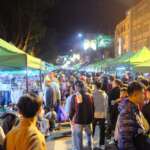
Gastro outbreak not yet over, says Baguio mayor | Inquirer News
BAGUIO CITY — Stronger regulations, and more testing, will be enforced on commercial wells and water-refilling stations serving the summer capital, given the stomach flu outbreak at the start of the year, Mayor Benjamin Magalong announced on Sunday. Acute gastroenteritis (digestive inflammation) and other diarrheal ailments, which may have infected up to 3,087 people as of the latest tally of “self-reported” cases, are associated with contaminated water or poor food hygiene. But as of Sunday, only three gastro cases have been recorded by the city health services office, said Dr. Celia Flor Brillantes, city health officer, during a Jan. 14 afternoon briefing. The epidemiological curve shows a sharp downtrend in infections since Jan. 9, indicating that the spread of the…

After four-year downturn stock market recovery seen this year
MANILA — After four years in the doldrums, the Philippine Stock Exchange (PSE) expects local equities to regain ground this 2024 due to easing monetary policy stance and the continued revving up of the economy postpandemic. PSE president and CEO Ramon Monzon, in a statement, said the local stock barometer may trade within the 6,800 to 8,300 territory this year, banking on analysts’ optimistic outlook. The range suggests a projected Philippine Stock Exchange Index (PSEi) upswing of at least 5.4 percent to as much as 28.7 percent this year. “The expected rate cuts by the US Federal Reserve and Bangko Sentral ng Pilipinas, as well as Philippine government’s aggressive spending on infrastructure projects and continued increase in foreign investment pledges…

BI: Almost 50,000 arrivals on New Year’s Eve alone | Inquirer News
MANILA, Philippines — The Bureau of Immigration (BI) on Tuesday said it processed 49, 892 arrivals on New Year’s Eve alone, Thirty four percent the visitors are foreigners, the BI added. BI Commissioner Norman Tansingco said that this is an indication that the Philippines is “regaining its momentum as a popular holiday destination among foreign nationals.” In December last year, 1.6 million arrived in the country, overshooting the projected 1.5 million arrivals. The BI likewise reported that there were “almost no major concerns” in its operations during the Christmas holiday season. “Better public service is our gift for the holidays,” Tansingco said. The Department of Tourism in its year-end report on Tuesday said that the country welcomed over 5.4 million…
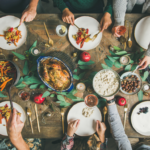
What does ‘eve’ mean in Christmas, New Year? | CDN Digital
CEBU CITY, Philippines – Christmas and New Year are two of the biggest celebrations people look forward to each year. But why does everyone also celebrate the eve of Christmas and New Year? And why are they called Christmas and New Year’s Eve? The word ‘eve’ refers to ‘the day or period of time immediately before an occasion,’ according to Oxford Languages. It can mean the day before, night before, or period before an event. Christmas Eve falls every December 24. As defined by Britannica, it is the day before Christmas, a Christian holiday. Meanwhile, New Year’s Eve is every December 31, which is the last day of the year, and the day before January 1 of the next year.…

Activists picket military camp to search for ‘desaparecidos’ | Inquirer News
CITY OF SAN FERNANDO — At least 50 protesters, led by activists, families and friends of four “desaparecidos” (victims of enforced disappearances), picketed the gates of the military’s Northern Luzon Command (Nolcom) headquarters in Tarlac City on Wednesday as they continue to search for their colleagues and kin. The group demanded that Nolcom — a unified command of the Philippine Army, Philippine Navy and Philippine Air Force in the Ilocos, Cagayan, Cordillera and Central Luzon regions — surface four people who have been abducted during the first two years of the administration of President Marcos. Several fire trucks were seen parked near Nolcom’s main gate in an apparent attempt to prevent the protesters from entering the military camp. Katrina Ortiz…

City of Manila issues tighter rules on firecrackers, fireworks display | Inquirer News
MANILA, Philippines — No more private fireworks displays for Manileños. An Executive Order (EO) issued by the City of Manila officially prohibited private residences in the city from organizing their own fireworks displays to welcome 2024. Based on EO No. 36 Series of 2023, all fireworks displays must be limited to those held in designated areas and with valid permits obtained from the LGU. “The use of firecrackers and pyrotechnic devices shall be confined only to community fireworks displays with a valid permit secured from the Bureau of Permits in the City of Manila,” the EO read. The order, signed by Manila Mayor Honey Lacuña on December 28, said that those seeking to stage such displays must apply for a…
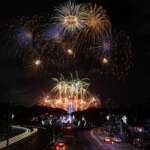
Kick off 2024 with a bang! Check out these New Year’s Eve parties across Metro Manila
MANILA, Philippines – Holiday celebrations are already in full swing. And who can blame us? After all, what better way to look back on the year that was and anticipate the coming year than attending these gatherings? And now that we only have a few days left before 2023 comes to a close, many are looking forward to ushering in 2024 with a bang. If you’re still deciding where you want to welcome the new year – we’ve got you covered! We’ve listed down several 2024 countdown parties that you can enjoy on December 31: Sofitel Manila’s offering a groovy kind of celebration to welcome 2024 in style with Shindig: Disco Dancing Through the Eras! The event is set to…

Trash, pollution: The dark side of PH holiday celebrations | Inquirer News
MANILA, Philippines — In the Philippines, while New Year festivities bring joy and hope, there’s a different, less pleasant tune playing alongside these — the rising crescendo of trash and pollution that accompanies the season’s revelry. Every year, it is part of Filipino tradition to flock to local parks, like the historic Rizal Park in Manila or the Quezon Memorial Circle in Quezon City, to celebrate New Year. In many parts of the country, loud and huge street parties are held to celebrate the holidays. An example would be Manila’s Tondo district, known for its yearly street party. Regardless of the place where Filipinos welcome and celebrate the holiday season, a common outcome unfolds: the annual aftermath of truckloads of…
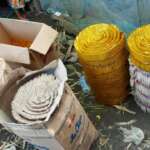
1 injured in firearm incident days before New Year–PNP | Inquirer News
MANILA, Philippines — A person was injured in an illegal firearms discharge incident a few days before New Year’s, the Philippine National Police said Tuesday. As of 6 a.m. Tuesday, the PNP reported seven cases of illegal firearms discharge, with five firearms confiscated. However, authorities have not recorded any casualties due to stray bullets. READ: Man nabbed for firing gun inside PNP HQ to protest ‘corruption’ in BSKE Meanwhile, the PNP confiscated 190,390 pesos worth of illegal firecrackers nationwide. Confiscated firecrackers include piccolo, poppop, five-star, pla-pla, judas belt, “sawa,” and others. The Department of Health has discouraged the use of firecrackers during holiday celebrations. Instead, the DOH urged the public to use alternative noise-making methods and encouraged local governments to…

Firework-related injuries rise to 52 — DOH
MANILA, Philippines — Five cases of traumatic amputation are among the 24 firework-related injuries recorded from 6 a.m. December 25 to 5:59 a.m. December 26 across the country. That is according to the Department of Health (DOH) on Tuesday. READ: Firecrackers: Reminders from DOH-7 on using them for Christmas Day, New Year The DOH said that these would bring the total of recorded firework-related injuries to 52 with less than a week before New Year’s eve. Of the five cases of traumatic amputations, three involved minors and the remaining two involved adults. “Ang limang amputation ay nagresulta sa pagkawala o pagkaputol ng mga daliri at kamay (The five amputations resulted in the loss or severing of fingers and hands),” said…

Four fireworks-related cases logged ahead of New Year celebration
MANILA, Philippines — Four fireworks-related injuries were recorded nearly two weeks before the anticipated New Year’s Eve revelry, the Department of Health (DOH) said. In a statement, the DOH noted that the four wounded were children aged 6 to 13, prompting the agency to reiterate its call to the public and concerned government agencies to work together against the use of illegal fireworks such as boga, 5-star, and piccolo. READ: Buying fireworks for holiday celebrations? Be cautious, says DTI “We must stand firm to eradicate the use of illegal fireworks. Our laws are there to protect against illegal fireworks. We should all protect our communities,” it said. The DOH stressed that both law enforcement and traders play crucial roles in…

Holiday hopes drop, but 92% see much better 2024 — Pulse Asia
MANILA, Philippines — While the number of Filipinos who expect their holiday celebrations in 2023 to be more prosperous than last year declined, an overwhelming majority remain confident that life in 2024 will be much better, according to a recent survey from Pulse Asia. Reports released by Pulse Asia on Friday showed that only 30 percent of respondents believe they would be having better celebrations in 2023 compared to 2022 — down from the 43 percent registered in November 2022. This accounts for a 13-point drop. Belief in better celebrations for 2023 decreased the most in Visayas, from 66 percent in 2022 to 42 percent in 2023 (-24 points), followed by Mindanao (from 46 percent to 31 percent), National Capital…
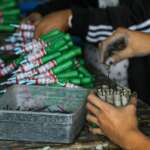
DOH raises alarm on firecracker-linked psychological stress
ILOCOS NORTE, Philippines – The Department of Health (DOH) in the Ilocos region has raised concerns about the potential psychological stress caused by firecrackers, especially illegal ones, during Christmas and New Year celebrations. During a press briefing on Monday, December 18, Dr. Joyce Suguitan, a DOH medical officer, warned against exploding firecrackers known as “Five stars,” “Judas’s belt,” “Atomic bomb,” “Giant bawang,” “Goodbye Philippines,” and “Boga” (improvised cannon). The DOH said these are the types of firecrackers that have historically caused the highest number of fireworks-related injuries (FWRI) in the region over the past three years. Suguitan said revelers should not only be concerned about minor to life-threatening physical injuries caused by firecrackers but also about the psychological trauma resulting…

A guide to the 10 entries for MMFF 2023
MANILA, Philippines – The Metro Manila Film Festival (MMFF) is set to make its return to Philippine cinemas with a new slate of movies that Filipino audiences can enjoy this holiday season. For the first time in MMFF history, this year’s edition will feature 10 films instead of the usual eight. These movies range from historical dramas, romantic comedies, and horror flicks. Bookmark this list as your guide to navigating MMFF this year: Komik icon Pedro Penduko hits the silver screen with Matteo Guidicelli playing the titular protagonist in the movie suited for all ages. Directed by Jason Paul Laxamana, the upcoming movie portrays Pedro Penduko as a timid “wimp” raised in the US. Upon his father’s death, he embarks…

McDonald’s Stripes Run participants raised P1 million for children’s literacy
The Philippine Business for Education (PBEd) 2023 report stated that the education system is in crisis. Hence, collaborative efforts from various stakeholders are needed to improve the state of the local education system. Last Dec. 10, 2023, 9,230 participants, ranging from families to groups of friends and solo runners, took part in McDonald’s Stripes Run 2023, pledging their support in elevating children’s literacy – a milestone for McDonald’s garnering the highest number of participants after 12 years of holding the program. Held at the SM Mall of Asia Concert Grounds, Stripes Run saw McDonald’s brand reaching its goal of raising P1 million for the Ronald McDonald House Charities’ Read to Learn program while providing an avenue to bring feel-good moments…

LIST: Train schedules for Christmas 2023
MANILA, Philippines – Railways will observe adjusted operating hours this holiday season. Here are the schedules released by train operators. The MRT-3 will have a shorter operating schedule for Christmas Eve and New Year’s Eve, as well as on Christmas Day and New Year’s Day. Meanwhile, it will follow its regular weekday schedule for December 15, 18 to 22, 26 to 29, 2023 and January 2 to 3, 2024. It will also operate regularly on the weekends of December 16, 17, 23, and 30. See the full schedule below. Other train operators such as LRT1, LRT2, and the Philippine National Railways have yet to release their schedules for Christmas 2023, as of posting. – Rappler.com

LIST: MRT-3 schedule for Christmas, New Year holidays | Inquirer News
MANILA, Philippines — The Metro Rail Transit-3 (MRT-3) announced its holiday schedule from December 15, 2023, to January 3, 2024, on Thursday. The line will operate on the regular weekday schedule for December 15, 18-22, 26-29, 2023, and January 2-3, 2024. Meanwhile, the weekend schedule will be used for December 16, 23, and 30, while the regular Sunday schedule will be observed on December 17. The operating hours for Christmas Eve and New Year’s Eve, as well as on Christmas and New Year’s Day itself, will be adjusted.

An ‘Enchanting Baguio Christmas’ 2023: A festive wonderland awaits
BAGUIO CITY, Philippines – This year, Baguio City is set to transform into a magical holiday wonderland with “An Enchanting Baguio Christmas.” This was announced by Baguio Tourism Council (BTC) chair and president Gladys Vergara. The BTC has meticulously planned a series of events, with a European-themed Christmas Market at the Rose Garden in Burnham Park as the centerpiece. Vergara promises that the market will be a festive haven, adorned with twinkling lights and Christmas decorations, offering visitors a unique Yuletide experience. Baguio Mayor Benjie Magalong expressed the city’s excitement over the BTC’s lineup of events. “Christmas has always been celebrated with spiritual piety as blended with contemporary practices, a much-visited pageant our people have been known for,” he said.…

